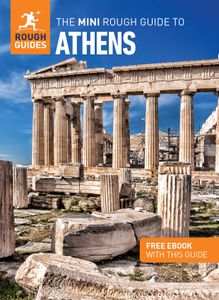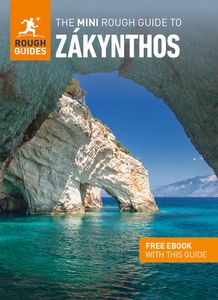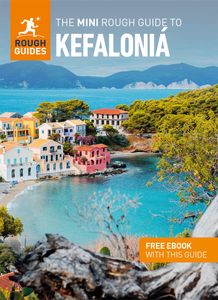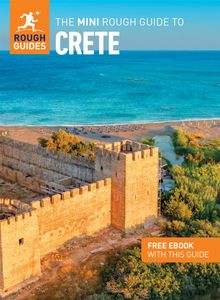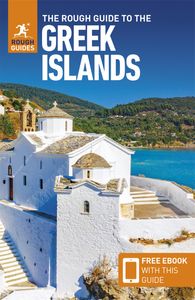Náxos Music Festival
One of the highlights of Naxiot evenings is the Domus Festival of classical, jazz, choral, Byzantine and traditional music held at the Venetian Museum in either the garden or the basement, depending on the season and weather (naxosfestival.com/naxos-domus-festival). Tickets should be booked in advance at the museum (22850 22387) and include a glass of local wine or kítron.
Central Náxos
After its beaches, Central Náxos is the island’s second unique selling point with lush green valleys, mountains, painfully picturesque villages, historic churches, old forts and Classical sites. Because of the sheer size of the island these are best enjoyed via two day-long drives: one short and one much longer. The short drive is Náxos–Galanádho–Sangrí–Halkí–Moní–Kinídharos–Flério–Náxos, while the longer drive is Náxos–Galanádho–Sangrí–Halkí–Filóti–Aperáthou–Apóllonas–Náxos via the northern coastal road.
Galanádho and Sangrí
From Náxos Town, head for the market village of Galanádho to reach the twin villages of Sangrí, on a vast plateau at the head of a long valley. On the way have a look at the domed eighth-century church of Áyios Mámas, neglected since the Ottoman conquest. Káto Sangrí has the ruins of a Venetian castle, while Áno Sangrí is an attractive little place, all cobbled streets and fragrant courtyards. It’s also only about ninety minutes’ walk to the Byzantine castle of Apalírou, at 474m, which held out for two months against the besieging Marco Sanudo. Its fortifications are relatively intact and the views magnificent. Thirty minutes’ stroll away, on a path leading south out of the village, or 3km by surfaced lane, are the partially rebuilt remains of a Classical temple of Demeter (Tues–Sun 8.30am–3pm; free) from 530 BC, over which was constructed an early Christian basilica.
The Tragéa and Halkí
From Sangrí, the road twists northeast into the Tragéa region, scattered with olive trees and occupying a vast highland valley. The area is the only part of the Cyclades to have a regular winter snowfall, and the only part with traditional songs about snow. It’s a good jumping-off point for all sorts of exploratory rambling. Halkí, 16km from Náxos Town, is a fine introduction of what is to come; set high up, it’s a quiet town with some lovely churches, including the Panayía Protóthronis church (daily 10am–1pm; free), with its eleventh- to thirteenth-century frescoes. Just behind is the restored seventeenth-century Venetian Grazia-Barozzi Tower, and nearby is the distillery (1896) and shop of Vallindras Naxos Citron, whose charming proprietors explain the process of producing kítron followed by a little tasting session.
Moní, Kinídharos and Flério
Driving from Halkí to Moní you pass the sixth-century church of Panayía Dhrosianí (daily 11am–5pm, donation expected), historically the most important church on the island with some of the oldest frescoes in Greece. Moní itself, at an altitude of 550m, enjoys an outstanding view of the Tragéa and Mount Zas, and has numerous woodcarving workshops. From Moní you can loop back to Náxos Town, and the first village you encounter on the way is Kinídharos, with its marble quarries and daily folk evenings; it has a reputation of staging one of the best carnivals in the Cyclades. Five kilometres beyond is the village of Flério. Nearby is the most interesting of the ancient marble quarries of the seventh- to sixth-century BC on Náxos, home to two famous koúroi, left recumbent and unfinished; even so, they’re finely detailed figures, over 5m in length. The Koúros Flerioú (Koúros Melánon), from around 570 BC, is a short walk along the stream valley; the Koúros Farangioú (Koúros Potamiás) is a steeper walk up the hillside. Both are well signposted.
Aperáthou and the south
At the far side of the gorgeous Trageá valley, Filóti, the largest village in the region, lies on the northwestern slopes of Mount Zas, which at 1001m is the highest point in the Cyclades. APERÁTHOU (officially Apíranthos), 8km beyond Filóti, is hilly, winding and highly picturesque; it shows the most Cretan influence of all interior villages and gave Greece one of its prime ministers, Petros Protopapadakis (it’s unfortunate that he was executed for high treason in 1922). Its location high in the mountains means it is noticeably cooler and greener than the coast. There are two Venetian fortified mansions, Bardáni and Zevgóli, and, amazingly, four small private museums: Natural History, Geological, Fine Arts and a Folklore museum (April–Oct daily 10.30am–2.30pm; 7.30pm June–July; 9pm Aug; €2 for all); as well as a state Archeological museum (Tues–Sun 8.30am–3pm; free). There is some good shopping in Aperáthou, as well: Epilekton in the main street is an excellent delicatessen with a selection of local cheeses, hot peppers and sun-dried aubergines.
A turning at the southern end of Filóti is signposted to the Pýrgos Himárrou (12.5km), a remote 20m-high Hellenistic watchtower – one of the tourist landmarks of the island – and onward (another 12km) to the deserted but excellent in all respects Kalandó beach on the south coast. Bring your own water and food supplies if you’re planning to stop here.
Climbing Mount Zas
If you are arriving by bus and intend to climb Mount Zas you should start from the steps opposite the taverna Baboulas at the main square. This is a round-trip walk of three to four hours on partly marked trails to the summit, a climb that rewards you with an astounding panorama of virtually the whole of Náxos and its Cycladic neighbours. The initial path out of the village climbs up to rejoin the road to Apóllonas. The final approach trail begins beside the small Ayía Marína chapel. You can return to Filóti via the trail to the150m-deep Zas Cave, which is also accessed by a separate route through Ariés, ten minutes’ drive from Filóti.
If you have your own transport, you can drive all the way to Ayía Marína and continue on from there.







